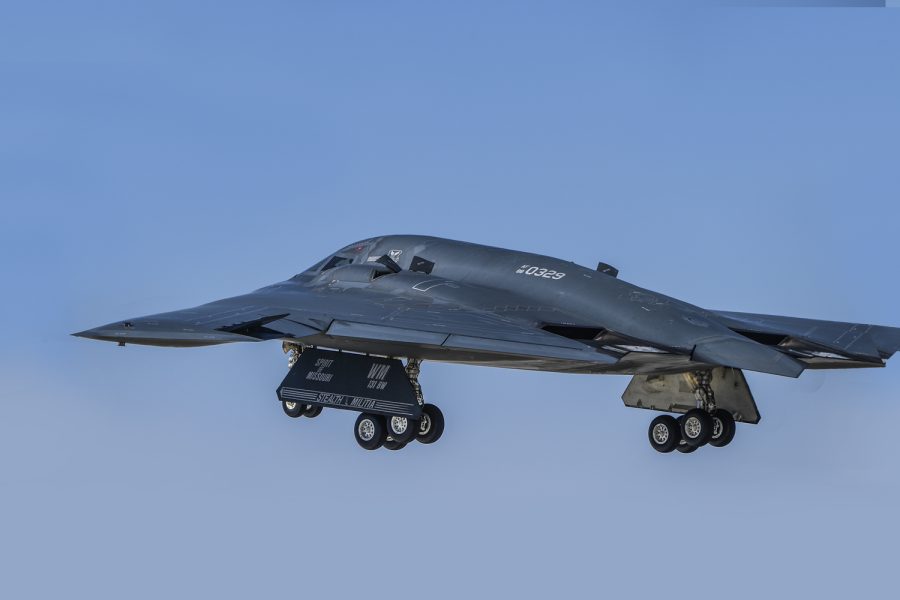U.S. Air Force B-2 bombers teamed up with the U.K.’s Royal Air Force F-35 Lightning IIs to fly across Europe’s North Sea in a single-day exercise.
The Bomber Task Force mission saw the Spirits hailing from Whiteman Air Force Base, Mo., join forces with the RAF’s fifth-generation fighters on Dec 13.
A KC-135 Stratotanker from the 100th Air Refueling Wing at RAF Mildenhall, U.K., providing air-to-air refueling for the mission. Following the mission, one of the B-2s returned to Whiteman on the same day, and another landed at RAF Fairford.
“Strategic bomber missions aim to deter conflict, showcasing our rapid response capability and reinforcing commitment to the U.K. and NATO,” Gen. James Hecker, commander of U.S. Air Forces in Europe, said in a release. “Operating alongside RAF fifth-gen fighters enhances our strength through combined training.”
The Air Force’s BTF deployments are part of long-planned exercises, independent from current global events.
The last European BTF before the B-2 mission took pace last month, when American B-1B Lancers deployed to RAF Fairford, U.K. From there, they conducted multiple flights over Europe, Africa, and the Middle East. The B-1s returned to Dyess Air Force Base, Texas, in late November.
The USAF and the RAF also participated in a biennial, trilateral exercise with France dubbed ‘Atlantic Trident’ in November. In the 2023 RAF-hosted iteration, scenarios were designed to enhance aircrew training with fourth and fifth-generation jets.
The B-2 Spirit, a long-range nuclear and conventional strike bomber operational since the 1990s, will eventually make way for the B-21 Raider, which will also replace the B-1.
The Air Force is working towards acquiring a minimum of 100 Raiders within the next decade, which would bring its bomber fleet to 175 airframes, including 75 re-engined and upgraded B-52 Stratofortresses.
BTF missions prepare Airmen to execute global operations at a moment’s notice across many regions of the world. By advancing interoperability and integrating allied fifth-gen aircraft, this latest one was aimed at bolstering a coordinated response to potential threats via NATO integration.
